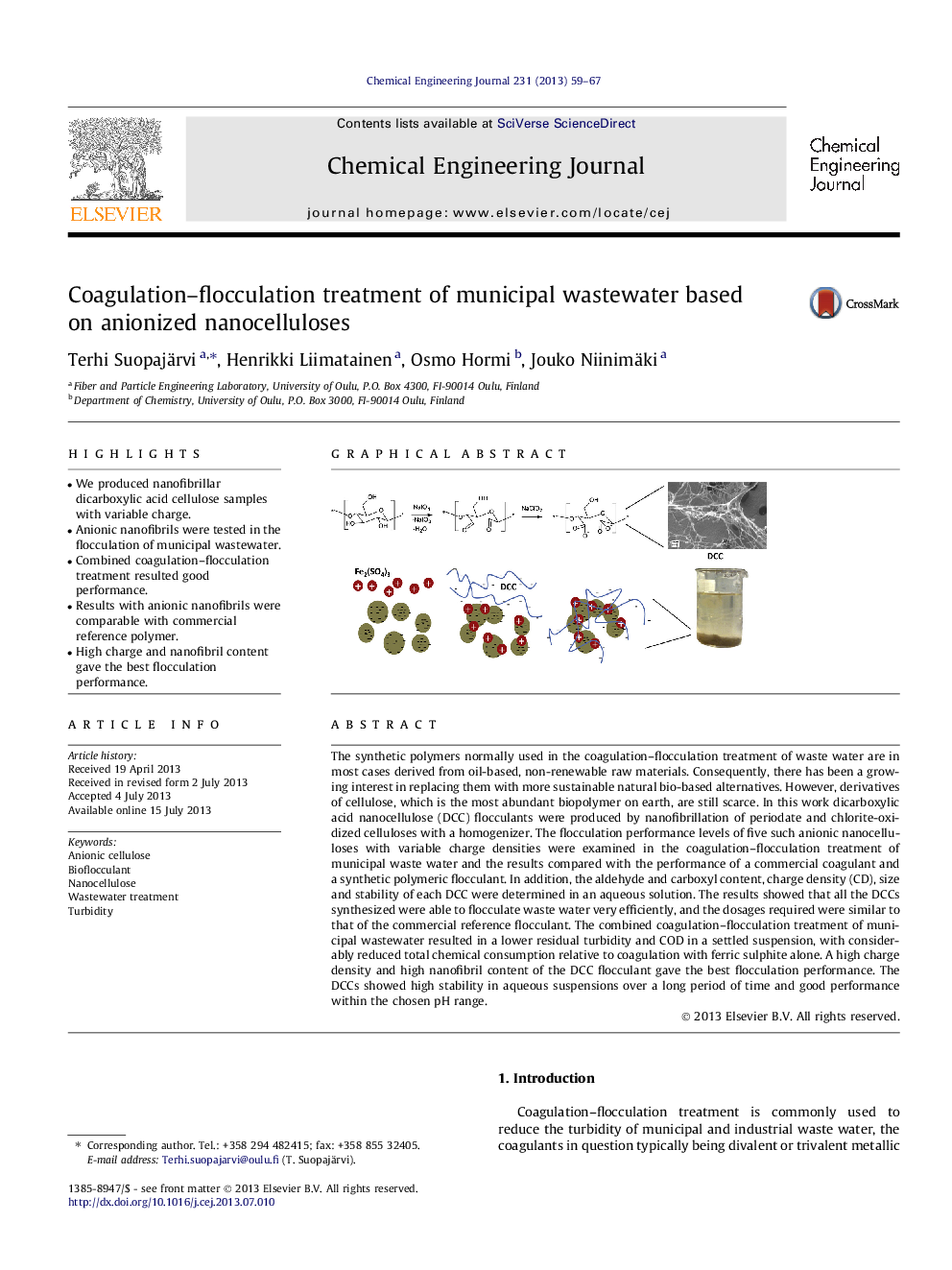| کد مقاله | کد نشریه | سال انتشار | مقاله انگلیسی | نسخه تمام متن |
|---|---|---|---|---|
| 148304 | 456408 | 2013 | 9 صفحه PDF | دانلود رایگان |

• We produced nanofibrillar dicarboxylic acid cellulose samples with variable charge.
• Anionic nanofibrils were tested in the flocculation of municipal wastewater.
• Combined coagulation–flocculation treatment resulted good performance.
• Results with anionic nanofibrils were comparable with commercial reference polymer.
• High charge and nanofibril content gave the best flocculation performance.
The synthetic polymers normally used in the coagulation–flocculation treatment of waste water are in most cases derived from oil-based, non-renewable raw materials. Consequently, there has been a growing interest in replacing them with more sustainable natural bio-based alternatives. However, derivatives of cellulose, which is the most abundant biopolymer on earth, are still scarce. In this work dicarboxylic acid nanocellulose (DCC) flocculants were produced by nanofibrillation of periodate and chlorite-oxidized celluloses with a homogenizer. The flocculation performance levels of five such anionic nanocelluloses with variable charge densities were examined in the coagulation–flocculation treatment of municipal waste water and the results compared with the performance of a commercial coagulant and a synthetic polymeric flocculant. In addition, the aldehyde and carboxyl content, charge density (CD), size and stability of each DCC were determined in an aqueous solution. The results showed that all the DCCs synthesized were able to flocculate waste water very efficiently, and the dosages required were similar to that of the commercial reference flocculant. The combined coagulation–flocculation treatment of municipal wastewater resulted in a lower residual turbidity and COD in a settled suspension, with considerably reduced total chemical consumption relative to coagulation with ferric sulphite alone. A high charge density and high nanofibril content of the DCC flocculant gave the best flocculation performance. The DCCs showed high stability in aqueous suspensions over a long period of time and good performance within the chosen pH range.
Figure optionsDownload as PowerPoint slide
Journal: Chemical Engineering Journal - Volume 231, September 2013, Pages 59–67